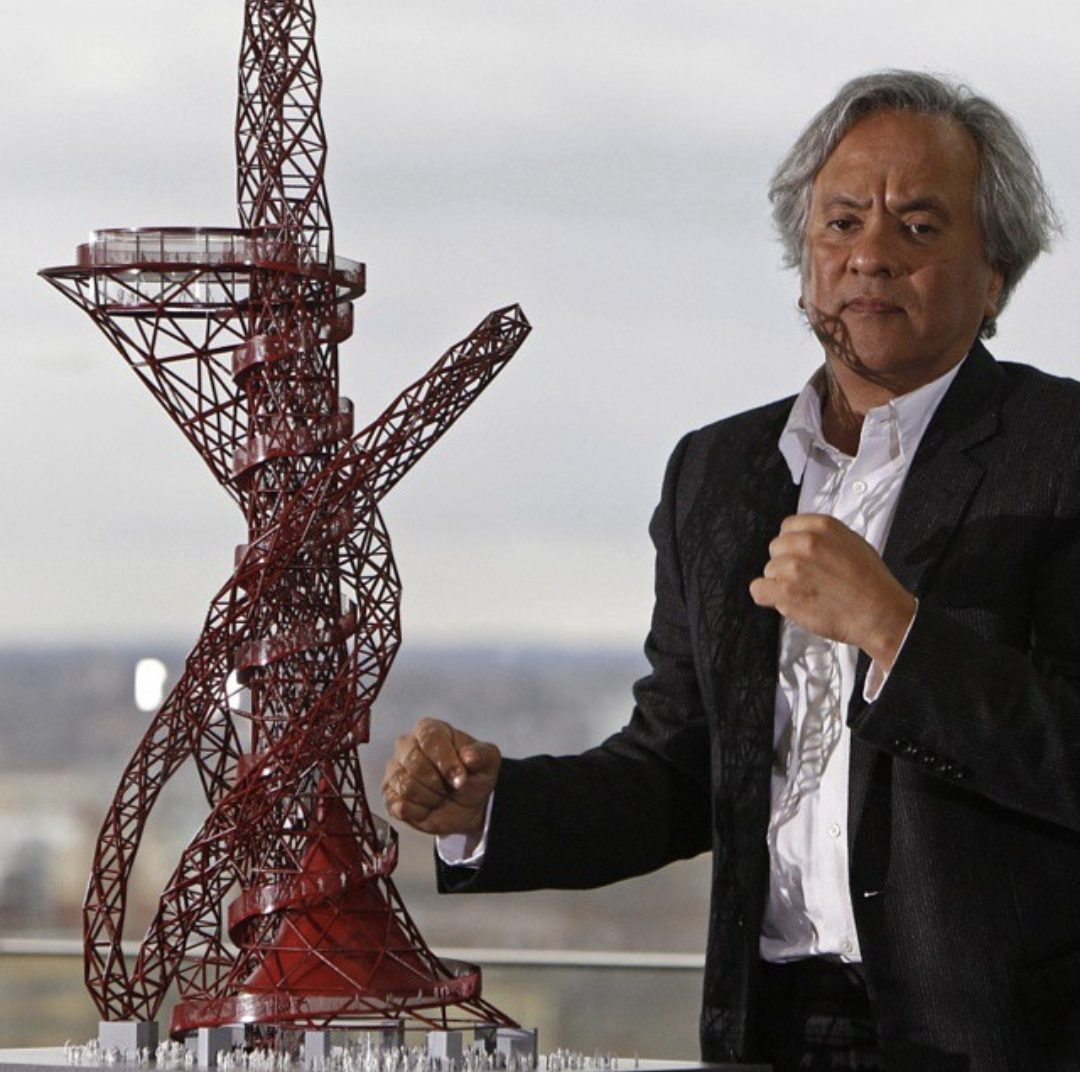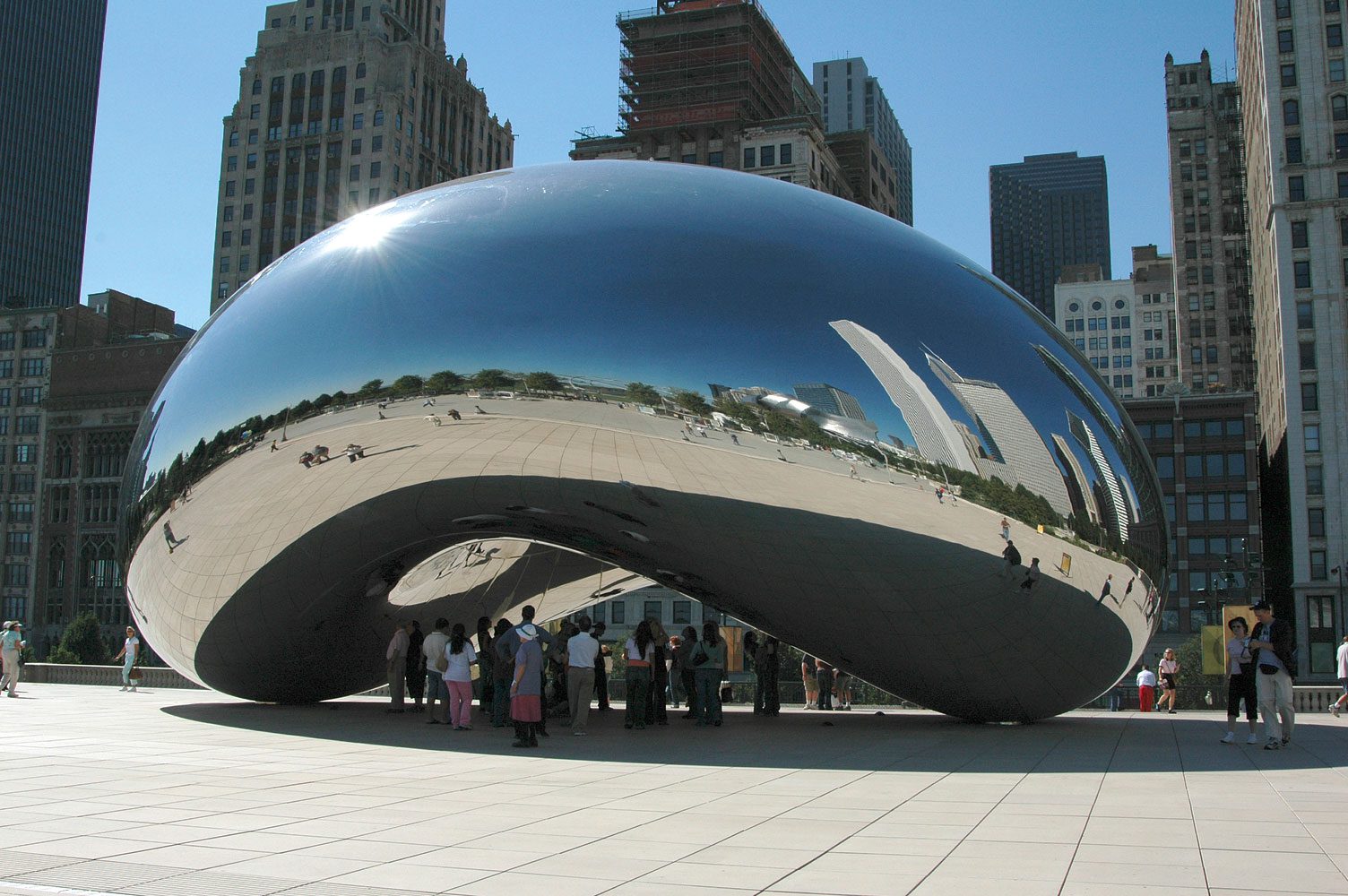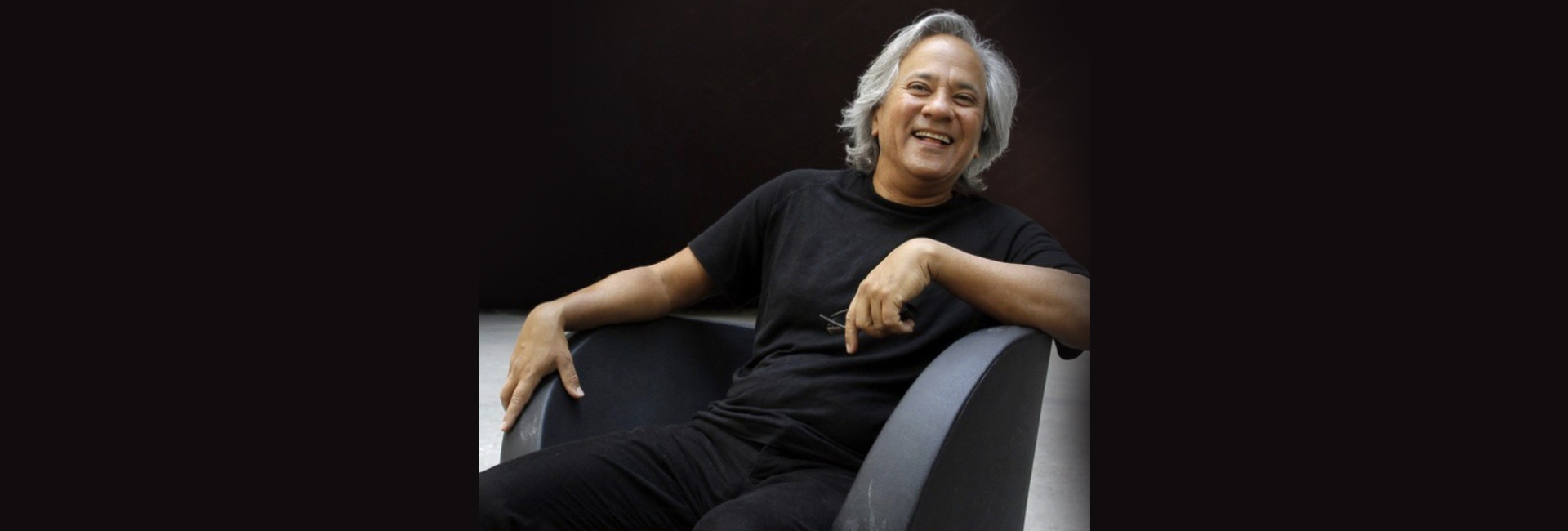(April 24, 2023) If by chance you were to open the website of the artist Stuart Semple and make your way to the ‘art products’ page, you will be asked to confirm two things: One, that you accept cookies and two, that you are not Anish Kapoor. When the British Indian artist purchased exclusive rights to Vanta Black, created by Surrey Nano Systems, he ruffled many feathers in the art world. Nevertheless, Anish is arguably one of the world’s most successful artists and his works have pride of place in the world’s top galleries and in spheres of public art. Everything about the man is larger than life – his colossal works and the statements they make. He is known for his ability (and desire) to provoke, whether it’s other artists with his proclivity for copyrighting colours, his fascination for gore, his licentious works and the fact that he maintains, through it all, “I have nothing to say.”
In retaliation to the Vanta Black controversy, Stuart Semple, calling Kapoor a “rotter,” created another pigment, the ‘world’s pinkest pink’. You can buy it online, but only if you manage to prove that “You are not Anish Kapoor, you are in no way affiliated to Anish Kapoor, you are not purchasing this item on behalf of Anish Kapoor or an associate of Anish Kapoor.” However, in 2016, Anish, who freely admits that he is “not an artist’s artist,” got his hands on the pink and of course, flaunted it, dipping his finger (we won’t specify which finger) in the pigment and posting it on Instagram.
The outsider
Despite his renown in the art world, Anish has made himself an outsider there, too. It’s a theme that has followed him throughout his life and while he isn’t happy about it, he does wear it on his sleeve. Back in 2020, he purchased for himself, to house the Anish Kapoor Foundation, the Palazzo Manfrin in Venice and placed, at the entry way, an upside-down mountain, “inverting the Italian tradition of the painted ceiling,” according to the New Yorker. At the 59th Venice Biennale, which took place earlier this year, Anish presented two monumental exhibits – one at the Gallerie dell’Accademia and the other at Palazzo Manfin. There is some poetry to this acquisition – the palace, which was vacant for many years, was once owned by Count Manfrin, a Croatian tobacco merchant . He was proud of his art collection and had transformed the first floor into a public viewing gallery. Many eminent personalities have visited the place, which became one of Venice’s main tourist attractions, including Lord Byron, George Ruskin and Edouard Manet. After his death, the place lay vacant, deteriorating into a dereliction, until Anish bought it back in 2020. After extensive restoration, which was hampered by the pandemic, the place is now almost ready and will house the Anish Kapoor Foundation.

Photo credit: Instagram
Courting controversy
Over a decade ago, his work, Dirty Corner, which was displayed at the Palace of Versailles, was vandalised with anti-semitic comments. The controversy snowballed, with the then President Francoise Hallane and Prime Minister Manuel Valls expressing their regret over the vandalism of the work and also over the nature of the vandalism itself. Anish, however, decided to leave it intact.
Anish was born in Bombay in the 1950s, to an Indian father and a Jewish mother. His maternal grandfather was a cantor at the synagogue in Pune – the family had moved there from Baghdad in the 1920s – “They were very poor, they spoke Arabic mainly, and spoke Hindi better than English generally,” he said during in an interview, speaking in the plummy British accent he has developed over the thirty-something years he has lived in the UK. His father, he says, joined the Indian Navy and went on to become an admiral.
“I was anti-authoritarian,” he says, “Not willing to listen to my admiral father or anyone else.” He was also a terrible student – Anish and his brother were day-scholars at the Doon School, where he hated the emphasis on a disciplined physical regimen. It was a cosmopolitan house regardless, his father loved Russian Romantic music and disliked ritualistic religion. There was a strong sense of trying to understand what it meant to be Indian. Anish describes, in various interviews, having felt like an outsider, being part of a very small religious community in a very large country.
From an Israeli kibbutz to art school in the UK
When Anish was around 16, he and his brother went to live in a kibbutz in Israel. “We believed then that a kibbutz had a form of communal life that was real, shared and equal. What it hid was that there were unequal Jews and non-Jews,” he said, in an extensive interview with Yanis Varoufakis. One day, a man walked up to him and said, “black,” in Hebrew, leaving the teenage Anish completely taken aback. That sense of being an outsider was driven in further and has always remained with him. It was during those three years – that he decided to be an artist and rented himself a studio where he would paint.

Cloud Gate in Millennium Park, Chicago. Photo credit: www.anishkapoor.com
In 1973, just before the Yom Kippur War, Anish moved to Europe. His family had relocated to Monaco by then and he hitchhiked his way across the continent. The UK at the time was in the throes of the ‘New Left’, where activists were campaigning for a range of issues, including civil and political rights, environmentalism, feminism and gender equality. “It was amazing, at one level.” Anish remarks. “There was garbage piled high on the streets because people were not working – adamantly not working. I loved it.”
Naturally, this revolutionary fervour peaked in university campuses and art colleges are especially prone. The Hornsey College of Art was “a militant, lefty college where nobody did anything. It was protest all day and all night,” Anish describes it. For the anti-authoritarian who had defied his conservative family, art school was a different experience. He had to find himself, as a human being and as an artist. “I have come to discover, it isn’t to do with what I think or what I have to say. I often say that I have nothing to say. One uses a different part of one being to create.”
When fame found him
At the time, nobody really made a living from art, apart from big names like Lucien Freud, Henry Moore and a handful of others. The thing to do was teach, which Anish thought he would do a couple of times a week, dedicating the remainder of his time to his art. However, recognition came early on – through his first series, 1000 Names, inspired by his first return visit to India since he had left for Israel. In 1982, his works then made form styrofoam and wood and using the powdered pigment for which he was known, were taken on by the prestigious Lisson Gallery.

Descension, at Brooklyn Bridge Park, is 26 metres in diameter, a giant swirling pool of water.
Photo credit: www.anishkapoor.com
He’s always on the intersection of art, sculpture, engineering and technology – the latter two are maybe a nod to his parents, who hoped their son would be an engineer, as a good Indian boy should. In Cloud Gate, for instance, he bought a milling machine from Boeing, a machine that can “make stainless steel completely flat so you can’t see ripples even at a micro level,” he said in an interview. “We wanted to see if it would be possible to make curved forms. The whole point was to make an object without any seams and no joints, so there is no scale.”
Shades of Red
His fascination for the colour red is known. Anish’s artistic expression carries an unmistakable undertone of violence, he creates the distinct sense in the viewer that he or she has walked into a slaughter-house. In 2019, he created Sacrifice, which is not for the faint of heart. The walls and floors are covered with artificial gore while the centerpiece itself, a massive sculpture in steel, is covered in what looks remarkably like human skin, made from a resin that he has created to resemble blood. If you were to think he was making a carnal statement, you might not be entirely wrong.
Svayambhu, an installation created for the Haus Kunst in Munich, is a response to the building’s history. The Haus der Kunst is the first monumental propaganda building of the Third Reich and its debut exhibition was “The Great German Art Exhibition,” a display of Nazi-sanctioned work. A Sanskrit word, Svayambhu means auto-generating or self-generating and Anish makes sure that it lives up to its title. Tracks ran through the Haus Kunst, on which a motor-propelled block of wood carrying red wax slowly moves through the rooms, leaving a trail of gore in its stead.

Svayambhu. Photo credit: www.anishkapoor.com
Other art works include Shooting into the Corner, which includes a fully functional cannon that shoots tons of gory goop into a corner, as the name suggests. His 1992 work, Descent into Limbo, is a cube shaped building with a 2.5 metre hole set into the floor. The hole has been painted black to create the feeling of being an infinite drop – once, an Italian man in his sixties actually fell in.
Anish lives in the UK and works out of his sprawling studio Camberwell District in South London, which encompasses almost an entire block. From here, the Turner Prize winning artist, who was also given a Knighthood, has created works that are on prominent display around the world, at the top galleries and in public spaces. His architectural works are Cloud Gate, in Chicago, Void Field at the British Pavilion, Descension, at the Brooklyn Bridge Park and the Arcelor Mittal Orbit, possibly the best-known piece of public art in Olympics and one of Anish’s most famous works overall.
- Follow Anish Kapoor on Instagram


